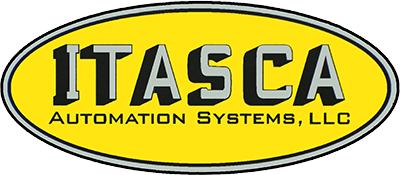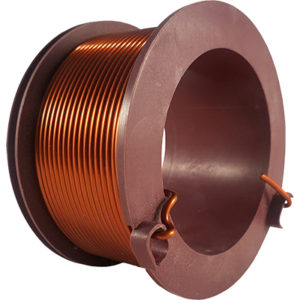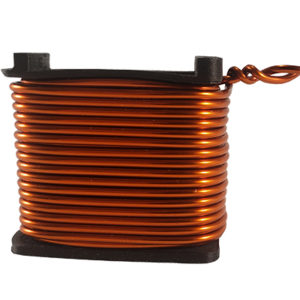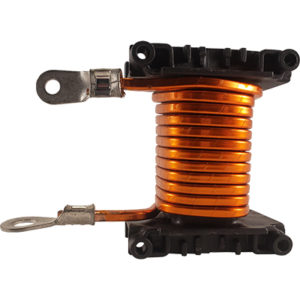The model 1000 series winders were designed to do larger coils than the model 100 winder can handle. Itasca Automation Systems Model 1000 Programmable Coil Winder is perfect for companies requiring quick change over, program storage for multiple programs, job shops running multiple varieties of coils, or labs developing new coil proto-types. The Model 1000 is a fully programmable embedded PC, capable of performing the most complex programming requirements.
The control allows you to change the pitch, traverse length, Tension and rpm at any turn count within the wind command.
Below are some of the options we offer on the model 1000 winders: Foot Pedal, Hot Air Gun, Skeiner, Programmable Electronic Tension, Eyelet Nozzle and V roller wire guide, Liquid Bond Attachment as well as extended I/O.

More Product Information
| Model | Spindle Speed | Wire Size | Pitch Resolution |
Traverse Length |
Max Coil Diameter |
Power Supply | Dimensions |
|---|---|---|---|---|---|---|---|
| 1000-12 | 6,000 | 46-9 AWG | .00001" | 12.0" | 11.0" | 230 Volt Single Phase | 43"W x24"D |
| 1000-18 | 6,000 | 46-9 AWG | .00001" | 18.0" | 11.0" | 230 Volt Single Phase | 49"W x 24" D |
| 1000-24 | 6,000 | 46-9 AWG | .00001" | 24.0" | 11.0" | 230 Volt Single Phase | 55"W x 24" D |
| 1000-30 | 6,000 | 46-9 AWG | .00001" | 30.0" | 11.0" | 230 Volt Single Phase | 61"W x 24" D |
Model 1000 Series Winders
The Model 1000 Series Winders are a line of innovative, advanced winding machines designed for various industrial applications. With their cutting-edge technology and reliable performance, these winders have gained a reputation for their efficiency and precision in handling winding processes.
These winders are specifically engineered to meet the demands of modern manufacturing and production environments, offering enhanced productivity and flexibility.
One notable feature of the Model 1000 Series Winders is their modular design, which enables easy customization and adaptability to different winding requirements. Whether wire, cable, fiber, or any other type of material, these winders can be tailored to accommodate various spool sizes, diameters, and wind patterns.
Let’s dive into the world of the Model 1000 Series Winders and explore the remarkable features that set them apart from other offerings on the market.
Design and Construction
The Model 1000 Series Winders are known for their precision, efficiency, and versatility in handling different winding applications. Here’s a general overview of the design and construction of the Model 1000 Series Winders:
Frame and Structure: The winders feature a robust frame constructed from high-quality materials such as steel or aluminum alloy to provide strength and stability. The frame supports various components and ensures the machine’s durability and longevity.
Winding Mechanism: The winding mechanism consists of a rotating spindle or shaft onto which the material is wound. It is driven by a brushless motor or an automated system, allowing controlled rotation speed and direction.
Tension Control System: The Model 1000 Series Winders employs a tension control system to maintain proper tension during winding. This system may include adjustable tensioning devices, such as tension rollers, magnetic brakes, or pneumatic tensioners. Precise tension control helps ensure uniform winding and prevents material damage or breakage.
Traverse Mechanism: The winders incorporate a traverse mechanism to evenly distribute the material across the spool or bobbin. The traverse mechanism moves the winding point back and forth across the width of the spool, creating a layered or evenly distributed winding pattern. You can drive it using a motor or other mechanical means.The wire guide is driven by a brushless servo motor. The precision ballscrew assures the wire is accurately positioned.
Control Panel and User Interface: A user-friendly control panel and interface are provided to operate the winders. It allows the operator to set winding parameters such as speed, pitch, tension, traverse width, and direction. The control panel may include a display screen, buttons, knobs, or a touchscreen for easy configuration and monitoring of the winding process.
Safety Features: Safety is a crucial feature of the design. The winders have safety features such as emergency stop buttons, protective covers or guards, and sensors to detect abnormal conditions like excessive tension or material jams. These features help protect the operator and prevent potential accidents.
Customization Options: The Model 1000 Series Winders offer customization options for different winding requirements. This includes adjustable parameters such as winding speed, pitch, tension, traverse width, and patterns. The machines can be configured to handle various materials and spool sizes, making them versatile for different industries and applications.
Maintenance and Servicing: The design of the winders considers ease of maintenance and servicing. Access panels or removable covers provide convenient access to the internal components for cleaning, lubrication, or repairs. Additionally, the machines may incorporate self-diagnostic systems or monitoring capabilities to detect issues and assist in maintenance procedures.
Key Features and Functions
The Model 1000 Series Winders offer a range of critical features and functions that make them highly efficient, versatile, and reliable. Let’s explore their key features and functions in detail:
Precision Winding: The Model 1000 Series Winders provide precise and accurate winding of various materials such as wires, cables, fibers, coils, and other flexible materials. They ensure consistent tension control and precise layering, producing high-quality winding output.
Multiple Winding Modes: These winders offer multiple winding modes to cater to different winding requirements. They support various winding techniques, including traverse, precision layer, random, and programmable pattern winding. This flexibility allows users to achieve the desired spiral patterns and configurations.
Programmable Control: The Model 1000 Series Winders have advanced programmable control systems. Users can set and store winding parameters such as speed, tension, direction, layering, and stop positions. The programmable control enables easy replication of winding processes, reduces setup time, and ensures consistent winding results.
Diameter Sensing: To ensure precise layering and avoid overfilling or underfilling of the spools, the Model 1000 Series Winders incorporate diameter sensing mechanisms. They use ultrasonic or laser displacement sensors to measure the diameter of the wound material. Based on the measurements, the winding parameters are adjusted automatically to maintain consistent layering and achieve the desired diameter.
Material Handling Compatibility: These winders accommodate various materials with varying diameters, lengths, and flexibility. They can handle wires, cables, fibers, tapes, films, and even delicate or fragile materials. The winding mandrels or spindles are adjustable and can be customized to suit specific material requirements.
Speed and Efficiency: The Model 1000 Series Winders are known for their high-speed winding capabilities. They can achieve fast winding speeds without compromising on precision and quality. The combination of precise tension control, diameter sensing, and programmable control systems enables efficient and optimized winding processes.
User-Friendly Interface: These winders feature user-friendly interfaces that allow operators to easily control and monitor the winding process. They often come with touchscreens or graphical displays that provide intuitive navigation and real-time status updates. The interfaces also enable operators to set winding parameters, access stored winding recipes, and adjust on the fly.
Safety Features: The Model 1000 Series Winders prioritize safety during operation. They incorporate safety features such as emergency stop buttons, fault detection systems, and overload protection mechanisms. These safety measures help prevent accidents, equipment damage, and material wastage.
Customization and Integration: Depending on specific requirements, the Model 1000 Series Winders can be customized and integrated with other production systems or automation setups. They can seamlessly integrate into manufacturing lines, quality control systems, or data acquisition networks, enabling streamlined and automated production processes.
Comparison to Other Winders in the Market
The Model 1000 Series Winders stand out due to their exceptional features and performance. The Model 1000 Series offers superior reliability, precision, and versatility compared to other winders. These winders are designed with state-of-the-art technology, allowing for seamless operation and accurate winding of materials such as yarn, wire, or cable.
The Model 1000 Series Winders also boast advanced control systems, ensuring precise tension control and consistent winding quality. Additionally, they offer customizable settings and easy-to-use interfaces, making them adaptable to different winding requirements. Overall, the Model 1000 Series Winders outshine other winders by delivering outstanding performance, reliability, and flexibility for a wide range of winding applications.





